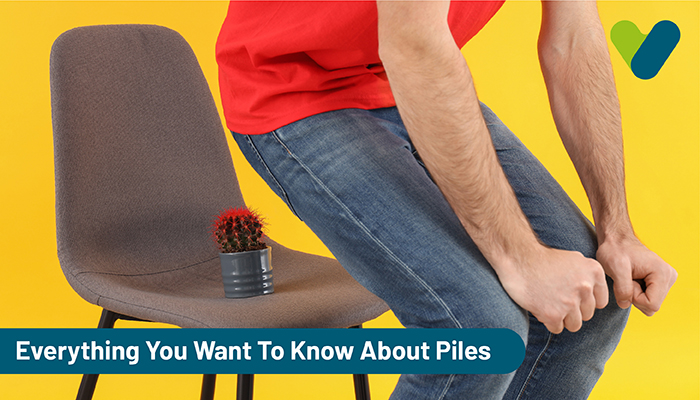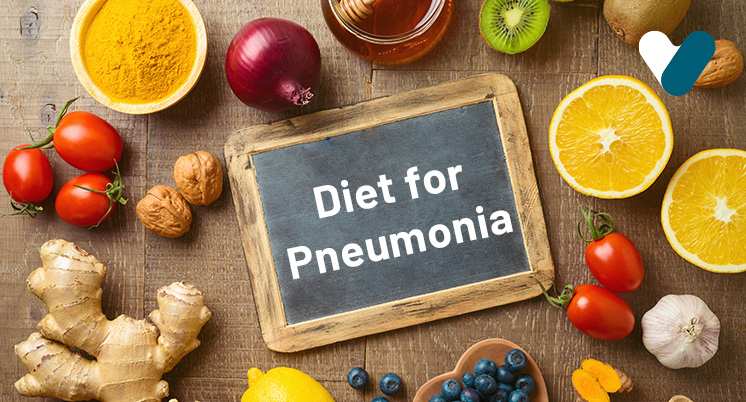It is not uncommon for people to develop piles as a number of factors cause this condition. Generally, haemorrhoids go away on their own as the body heals itself, but some people may need medical attention to cure this condition. If you or someone you know is suffering from piles, keep reading. Here, you will get an overview of the condition including its types, prevention, and treatment.
What are Piles?
In simple terms, piles are haemorrhoids developing inside and/or around your anus. Haemorrhoids are swollen and irritated blood vessels or veins that rupture if pressure is applied during bowel moments and bleed. Although piles can be troublesome, fortunately you can avoid and treat this condition with ease.Haemorrhoids are quite common in people irrespective of their gender, and almost half the population can likely develop haemorrhoids by the age of 50. Many women tend to get piles during pregnancy and childbirth. The outgrown uterus carrying a baby exerts additional pressure on the pelvic blood vessels; moreover, pressure is further applied while pushing the baby out, which puts more pressure on the blood vessels.
On the basis of location, piles are categorised into two categories—internal and external. Internal piles occur inside the anus within the rectum (a muscular tube at the end of large intestine or colon) and are not visible. In some cases, a haemorrhoid may fall outside the anus (prolapsed haemorrhoid). Internal piles are further divided on a four-point scale:
- Grade I There are no symptoms, and the growth does not protrude outside the anus.
- Grade II Piles may occasionally prolapse (fall out) from the anus but can retract back without any interference.
- Grade III Piles prolapse and require manual intervention to recede.
- Grade IV Piles prolapse outside the anus and cannot be pushed back inside even after manual intervention.
Symptoms of Piles
Although the symptoms of piles may vary slightly from person to person, some of the common symptoms are listed here:- Bright red blood mixed with your stool, in the toilet after you poop, or on the toilet paper after you wipe your anus
- Swollen lumps (sometimes hard) in and/or around your anus
- Pain, itching, and irritation in and/or around your anus
- Feeling like you still need to poo after finishing
- Mucus in your underwear or on the toilet paper after wiping your anus Sometimes the symptoms of haemorrhoids may be similar to those of other health problems. You should always consult your doctor if you are confused.
Causes of Piles
The following are some of the most common causes of piles:- Prolonged constipation or diarrhoea
- Pregnancy
- Old age
- Straining (pushing too hard) during bowel movements
Risk Factors and Complications of Piles
There are certain factors that increase the likelihood of a person having piles, such as:- Pregnancy
- Sitting on the toilet for too long
- Obesity
- Age between 45 and 65 years
- Family history of piles
- Heavy weightlifting
- Anaemia Although rare, severe blood loss due to haemorrhoids could cause anaemia.
- Strangulated haemorrhoid In case that blood supply is terminated to internal haemorrhoids, the haemorrhoid may get strangulated, which can lead to considerable pain.
- Thromboses (blood clot in haemorrhoid) Blood clots in a haemorrhoid can stop the blood flow and can be extremely painful and require medical intervention to remove the outgrowth.
- Anal fistula This is an infected tunnel between the skin and the anus.
When should you Consult a Doctor?
Usually, piles heal without needing any medical intervention and do not require medical attention, but sometimes, you may require medical care. Noticing blood in your stool can be a sing of other ailments related to the digestive system (such as colorectal cancer). Thus, it is important to see your healthcare provider to avoid any severe health complications and/or any mishaps.To get your condition accurately diagnosed, you may have to undergo the following exams:
- Physical exams to check your anus and rectum for any signs of haemorrhoids with digital rectum examination (DRE)
- Anoscopy using a hollow, lighted tube to check for internal haemorrhoids
- Colonoscopy, which is performed to examine the full length of the large intestine
Preventive Measures of Piles
You can prevent piles and reduce the risk of getting haemorrhoids by taking the following measures:- Eating a healthy balanced diet with an adequate amount of fibre and water
- Limiting the amount of time you spend on the toiled
- Avoiding pushing too hard during bowel movements
- Managing chronic constipation
- Maintaining a healthy weight
- Avoiding heavy lifting
- Leading a physically active life
Treatment for Piles
If you are diagnosed with piles, your healthcare provider will create a customised care plan considering important factors for you. The factors considered may include the following:- Age, medical history, and overall health
- Severity of the condition
- Type of haemorrhoids (internal, external, or both)
- Response to certain medicines, treatments, and therapies
- Lifestyle and comfort level
- Use of ice packs to reduce swelling
- Ointments or medicines for haemorrhoids
- Increasing the fluid and fibre intake or taking stool softeners or fibre supplements
- Sitting in plain or warm water in a bathtub
- Rubber band ligation to remove the haemorrhoid
- Sclerotherapy to shrink the haemorrhoid
- Electrical coagulation (or photo coagulation) to burn the haemorrhoid tissue
- Haemorrhoidectomy and haemorrhoidopexy to remove haemorrhoids
Living with Piles
People who are diagnosed with piles need to watch their diet, eat fibrous food items, and drink plenty of fluids to soften the stool and avoid constipation. In addition, working out on a regular basis while avoiding heavy lifting without proper preparation can also be helpful in preventing the condition from worsening further. Although piles heal naturally without the need of medical intervention, some people may require surgical procedures with minimal recovery time. It is best to manage the condition with diet and lifestyle changes in the early stages of the condition.Haemorrhoids, or piles, are not a serious health condition and do not pose any threat to a person’s health, but they can be problematic in case of complications. You should seek medical attention if you experience a sudden burst of pain in your anal region, unexplained high fever, or worsening of these symptoms overtime.


